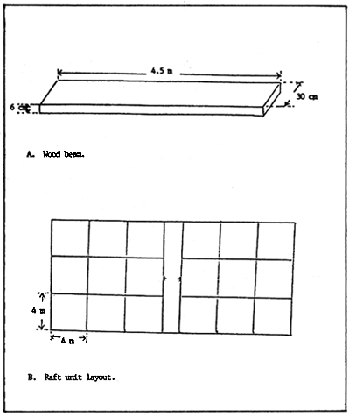Cai Liang-hou 1
Zhu Hong 2
Gao Wen-hua 3
I. Introduction
Fujian is a province located in the southeast coast of China. Several hundred years ago fishermen temporarily reared fish in small net-bags, however netcage culture of marine finfish actually started in the mid 1980's. The first floating fish farm was jointly established in Xiamen City by Hong Kong Aquatic Product Co, Ltd and Xiamen Fisheries Bureau. Netcage culture of marine finfish has since expanded in the whole area. At present there are several thousand netcage units in Fujian province. Most of the floating fish farms are owned by joint ventures or individuals.
II. Species cultured
In Fujian Province, there are four seasons a year. In summer, the seawater temperature can rise as high as 32 °C, and in winter, as low as 10 °C. Suitable fish species should tolerate low water temperature. The species being cultured in Fujian Province are the following:
Red spotted grouper (Epinephelus akaara)
Red sea-bream (Pagrosomus major)
Black sea-bream (Sparus microcephalus)
2 Fujian Provincial Aquatic Products Service Corp., Fujian, China.
3 Snapper Culture Farm, Tou-Men Village, Shu-ao Town, Pingtan County, Fujian, China.
III. Netcage and frame
The floating netcage system consists of netcage, frame, floating drums and anchors.
Netcage polyethylene and nylon are often used as the netcage material. Because nylon is more costly and heavier in weight than polyethylene, the latter is used more frequently. The netcage is usually square. This type measures 2m × 2m and 4m × 4m, with a depth of 2–5 m.
Frame. The frames used for supporting the netcages are constructed of wooden beams which measure 30cm × 6cm × 4.5m (Fig. 1A). The wooden beams are joined by bolts and nuts. Then 18 raft units are joined together as shown in Figure 1B.
Plastic drums (measuring 1m × 70cm) are used for floating the frames. The plastic drums are placed under the frame and fixed with nylon rope.
Anchors, each weighing 100 kg, are commonly used to keep the rafts in their position.
IV. Culture method
Supply of seed. Research on the artificial breeding and rearing of fry of black sea-bream has been put into practice. At present, about 200,000 – 500,000 high quality hatchery-reared fingerlings are produced annually in Fujian Province. Studies on the reproduction and rearing of the red sea-bream and red-spotted grouper have been made, and few fingerlings are produced. However, the seed for culturing still depends on the collection from nature. The fingerlings are transported to the culture sites in oxygenated plastic bags.
Stocking density. Stocking density mainly depends on the size of fish (Table A).
Table A. Stocking density of red sea-bream in netcage
| Total length (cm) | Stocking density (fish/m) |
| 1.0 – 1.5 | 100 – 200 |
| 3.0 – 4.0 | 40 – 80 |
| > 8.0 | 20 – 30 |
Feeds and feeding. Fish are fed with fresh or frozen low-value fish. For young fish, feeds are chopped into small pieces. Juvenile fish are fed three times a day; adult fish once or twice a day.
Harvesting and marketing strategies. After 15–18 months of culture, most of red sea-bream reach a weight exceeding 800 grams.

Figure 1. Wooden beams (A) used in the construction of the supporting frame and (B) an 18 cages raft unit.